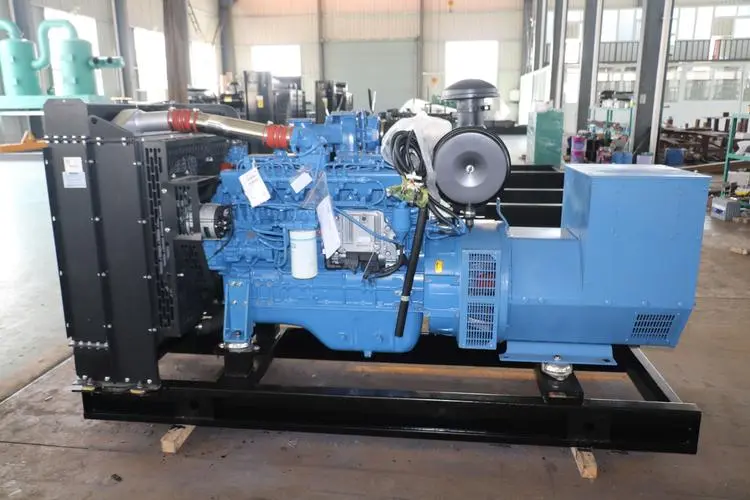Introduction:
In times of natural disasters such as hurricanes, earthquakes, floods, and wildfires, access to electricity is often disrupted, leaving communities in urgent need of power for essential services such as lighting, communication, medical facilities, and water pumping. Diesel generators have long been a crucial tool in disaster relief efforts, providing a reliable source of power to support relief operations and help affected populations in their recovery efforts. This article will explore the importance of diesel generators in disaster relief, their key features and advantages, as well as best practices for their deployment in emergency situations.
Importance of Diesel Generators in Disaster Relief:
Diesel generators play a critical role in disaster relief efforts due to their ability to provide a reliable and immediate source of power in areas where the electrical grid has been damaged or destroyed. These generators are highly versatile and can be quickly deployed to provide power to emergency response teams, medical facilities, shelters, communication centers, and other critical infrastructure. In the aftermath of a disaster, access to electricity can mean the difference between life and death for many individuals, making diesel generators an essential tool for first responders and relief organizations.
Key Features and Advantages of Diesel Generators:
1. Reliability: Diesel generators are known for their reliability and durability, making them well-suited for use in emergency situations where consistent power supply is essential. These generators can operate continuously for long periods without overheating or experiencing mechanical failures, ensuring a stable power source for relief operations.
2. Fuel Efficiency: Diesel generators are more fuel-efficient compared to gasoline generators, allowing them to provide power for longer durations without the need for frequent refueling. This is especially important in disaster situations where access to fuel may be limited or disrupted.
3. https://www.lkpowerplant.com/what-is-75kw-diesel-generator/ : Diesel generators are capable of producing high power output, making them suitable for powering a wide range of equipment and appliances in emergency situations. From lighting and communication devices to medical equipment and water pumps, diesel generators can support various critical functions during disaster relief efforts.
4. Portability: Many diesel generators are designed to be portable and easy to transport to remote or hard-to-reach areas affected by disasters. Their compact size and mobility make them ideal for rapid deployment in emergency situations, ensuring that power can be restored quickly to areas in need.
5. Longevity: Diesel generators are built to last and can withstand harsh environmental conditions, making them a reliable long-term solution for providing power in disaster-affected areas. With proper maintenance and care, diesel generators can serve as a dependable source of electricity for years to come.
Best Practices for Deploying Diesel Generators in Disaster Relief:

1. Conduct a Needs Assessment: Before deploying diesel generators in disaster-affected areas, it is essential to conduct a thorough needs assessment to determine the power requirements of key facilities and infrastructure. This will help in identifying the appropriate size and number of generators needed to support relief operations effectively.
2. Ensure Fuel Supply: One of the critical considerations when deploying diesel generators is to ensure a reliable supply of fuel to keep the generators running continuously. Establishing fuel storage facilities, coordinating fuel deliveries, and monitoring fuel consumption are essential steps in maintaining uninterrupted power supply during disaster relief efforts.
3. Regular Maintenance: To ensure the optimal performance of diesel generators during disaster relief operations, regular maintenance and servicing are essential. This includes checking fuel levels, changing filters and oil, inspecting electrical connections, and testing the generator under load conditions to identify any potential issues.
4. Training and Safety: Proper training of personnel responsible for operating and maintaining diesel generators is crucial to ensure safe and efficient operation. Training should cover basic generator operation, refueling procedures, safety protocols, and troubleshooting techniques to address common issues that may arise during deployment.
5. Coordination with Local Authorities: Effective coordination with local authorities, relief agencies, and other stakeholders is key to the successful deployment of diesel generators in disaster relief efforts. Clear communication channels, logistical support, and collaboration with relevant organizations will help streamline the deployment process and ensure that power is restored quickly to affected communities.
Case Studies of Diesel Generators in Disaster Relief:
1. Hurricane Katrina (2005): In the aftermath of Hurricane Katrina, which devastated the Gulf Coast of the United States, diesel generators played a crucial role in providing emergency power to hospitals, shelters, and communication centers. These generators helped support relief operations and enabled first responders to coordinate rescue efforts and provide assistance to thousands of affected individuals.
2. Earthquake in Nepal (2015): Following a devastating earthquake in Nepal, diesel generators were deployed to provide power to medical facilities, water pumping stations, and relief camps in remote mountainous regions. These generators helped maintain essential services and support relief efforts in areas where access to electricity was disrupted due to the earthquake.
3. Typhoon Haiyan in the Philippines (2013): In the aftermath of Typhoon Haiyan, which struck the Philippines with devastating force, diesel generators were used to restore power to critical infrastructure such as hospitals, water treatment plants, and communication centers. These generators played a vital role in supporting relief efforts and helping communities recover from the impact of the typhoon.
Conclusion:
Diesel generators are indispensable tools for disaster relief efforts, providing a reliable and immediate source of power to support emergency operations and help communities recover from natural disasters. Their reliability, fuel efficiency, portability, and high power output make diesel generators an essential component of disaster response plans around the world. By following best practices for deploying and maintaining diesel generators in emergency situations, relief organizations and first responders can ensure that power is restored quickly to areas in need, saving lives and facilitating the recovery process. As we continue to face the challenges of climate change and natural disasters, diesel generators will remain a critical resource for powering relief efforts and supporting communities in times of crisis.
